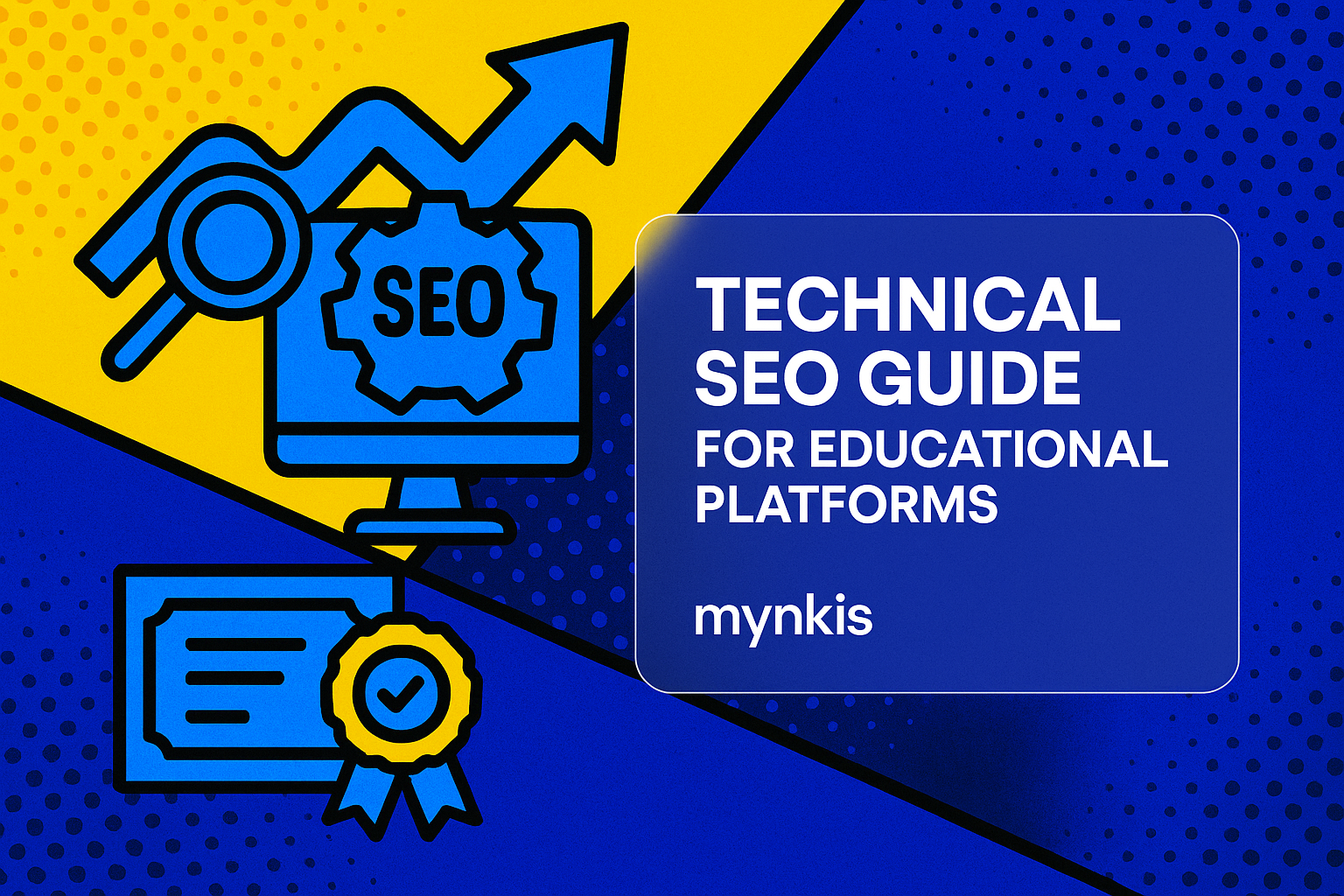Schedule a Demo
Technical SEO stands at the heart of any successful digital strategy, particularly for educational platforms striving to reach their audience effectively. When I consult with operations managers at academic institutions, I often highlight the importance of a well-structured website. A clear site architecture not only improves user experience but significantly boosts search engine rankings. I've seen schools that invested in a streamlined site structure experience a marked increase in both student and faculty engagement, simply because finding the resources they needed became an intuitive process.
Let's dive into site speed optimization—an absolute must for software platforms, especially in the education sector. According to Google's research, as page load time goes from one second to ten seconds, the probability of a mobile site visitor bouncing increases 123%. In my work, this statistic hits home; schools that have invested in faster loading times report higher retention of prospective students, thanks to reduced impatience and better overall digital experiences. The technical facets of achieving this include code minification, leveraging browser caching, and optimizing images, which, when well-implemented, can yield substantial rewards.
Mobile-first indexing can no longer be an afterthought in today's digital age, where smartphones reign supreme as the primary tool for internet access. The reality, as underscored by Google's shift to this indexing methodology, is that websites that do not cater effectively to mobile users risk being outranked. As I've guided academic institutions through these shifts, ensuring that their platforms are not just mobile-responsive but mobile-first has led to notable improvements in their SEO performance. This approach involves checking for mobile usability issues, ensuring touch-friendly navigation, and maintaining the readability of text on smaller screens.
With online security becoming a paramount concern, having an SSL certificate is non-negotiable. Google has long recognized HTTPS as a ranking signal, which is crucial for institutions looking to safeguard sensitive data like student records and to maintain trust with their digital communities. In my experience, transitioning educational platforms to secure sockets layer (SSL) not only enhances their search engine visibility but also strengthens user confidence, thereby increasing engagement and reducing bounce rates.
Integrating schema markup can radically change how your educational software appears in search results. By marking up elements like course details, faculty information, and event schedules, you allow search engines to provide more detailed and attractive snippets directly in their results pages. I've seen universities leveraging schema for structured data gain a competitive edge, boosting click-through rates by presenting more useful, immediate information to potential students and other stakeholders.
Crawl budget efficiency is often overlooked yet vital for larger educational websites where thousands of pages exist. In my consultations, optimizing how search engine spiders crawl the site significantly affects how efficiently their content is indexed. This means creating an XML sitemap, minimizing unnecessary duplicate content, and maintaining an active 404 error handling system. Such practices ensure that no page goes underutilized in terms of SEO potential.
Canonical URLs are more than just a simple SEO tactic—they're a crucial component for educational software platforms hosting similar or duplicate content across multiple pages or sections. In my direct experience, setting up correct canonical tags has eliminated the issue of content dilution and ensured that the most important pages rank highest, thereby directing more authoritative traffic towards those key sections where it's truly valuable.
For forward-thinking educational platforms, exploring Accelerated Mobile Pages (AMP) and Progressive Web Apps (PWAs) can be a game changer. AMP pages load near-instantaneously, providing a seamless experience on mobile devices—an invaluable feature for prospective students researching education options on the go. Meanwhile, PWAs can offer an app-like experience directly through the browser, blending the benefits of native applications with web accessibility, which I've seen significantly increase user retention for educational institutions.
Periodic SEO audits are crucial for maintaining and enhancing the digital presence of educational platforms. Over time, I've found that routine checks, coupled with responsive adjustments based on what these audits uncover, can sustain and often improve search engine rankings. From analyzing backlink profiles to checking site architecture, these audits help pinpoint actionable areas that can elevate an institution's online authority and reach.
Analytics offer an unending stream of insights into user behavior, from which educational platforms can craft strategies tailored to improve their SEO performance continuously. I've worked with schools that, by focusing on metrics such as bounce rate, session duration, and click-through rates from search results, have iteratively enhanced their site's user experience and SEO standings. Such strategic applications of data reflect the ongoing commitment needed to truly excel in the competitive educational software space.
In-depth keyword research, particularly focused on terms relevant to the educational sector, is fundamental. This isn't about keyword stuffing; rather, it's about understanding the nuances of language used by your target demographic—prospective students, faculty, and administrators—and reflecting that in the content strategy. Personally observing shifts in which phrases and terms are on the rise has guided me to adjust the optimization strategies for educational institutions, enhancing their visibility among the users who matter most.
The ultimate goal of any technical SEO strategy should be to enhance user experience. For an educational platform, this translates to ensuring that users find what they need with ease, whether it's course information, an enrollment form, or student services. Based on extensive user feedback from my clients, interfaces that prioritize accessibility, speed, and informativeness consistently rank higher and retain users longer, a principle supported by research from Nielsen Norman Group and the Internet Society.
Lastly, anticipating future trends in SEO is key to maintaining relevance. Voice search optimization, the increasing role of artificial intelligence in understanding search intent, and the evolution of user expectations all suggest an ever-changing SEO landscape. As I guide academic organizations, keeping an eye on these shifts—supported by sources like Search Engine Land and Moz—and adapting quickly emerges as a vital part of not just maintaining but enhancing their competitive standing in the educational software sphere.
